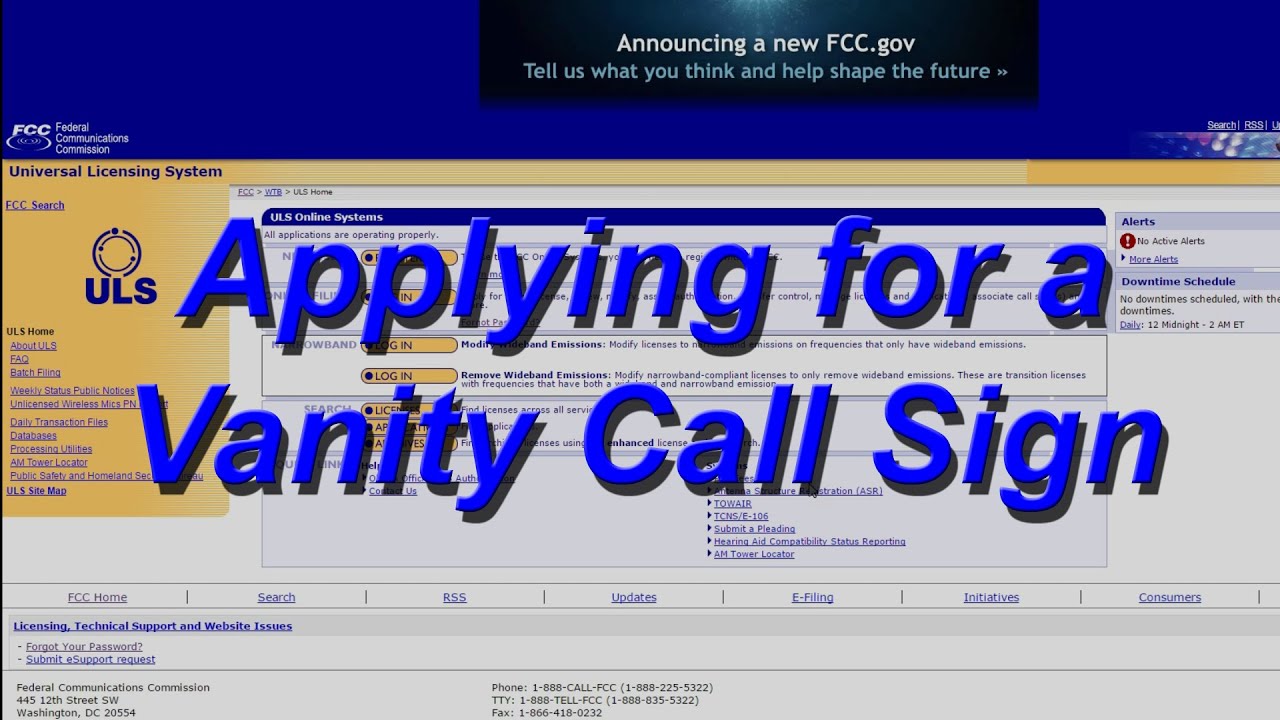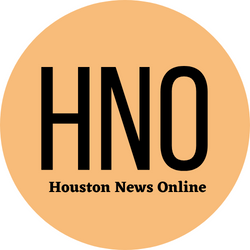How to get a Vanity Call Sign in Ham Radio
by siteadmin

Getting a vanity call sign is a big deal for many amateur radio operators. Hams treat their call signs with a special reverence and often feel that their call sign conveys a lot about them.
Individual Amateur and Club stations may request a vanity call sign subject to certain restrictions. Military recreation stations and RACES are not eligible for a vanity call sign.
Change Your Call Sign
If you’re an amateur radio operator, you can change your call sign at any time, provided you have a valid Amateur Radio license. You’ll need to get an FRN (Federal Reference Number) first and tie your new call sign to it. After that, you can submit an application for a call sign change to the FCC. You can find the form here, or you can get one from your local Amateur Radio club. For more information about ham radio and how you can get involved, go to https://hamradiofornontechies.com
When hams first started using call signs, they were self-assigned. They could be one, two, or three letters and sometimes included a number. Once radio amateurs began talking to other hams around the world, it became important for them to have a consistent system of call sign prefixes to use. This is why the Washington Conference of 1927 established a series of groups based on authorized license class and called them “call sign zones.”
You can find out what your new call sign might be by doing some research. The easiest way is to look at the FCC’s Vanity Call Sign Search Tool, which allows you to enter your desired call sign and then displays available options. The tool is very helpful, and it also allows you to select different combinations of prefixes and suffixes.
Another option is to check the call sign records in the FCC’s Universal Licensing System (ULS). You can log in to ULS using your Amateur Radio license or GMRS license number and password. Once you’ve logged in, click on “Work on This License” and then “Request Vanity Call Sign”.
Before submitting your application for a vanity call sign, it’s a good idea to become familiar with the sequential call sign system. There are certain rules that apply to each group based on the authorized license class.
Once your application is submitted, it will be “batched” with other applications that are received on the same day. Duplicate applications are dismissed and the remaining applications are processed in a random order, regardless of their content or the date on which they were received. The successful applications will appear on the list of issued call signs online shortly after 00:00 and 02:00 ET each morning.
Research Call Signs
In the old days (before the Internet) ham radio call signs were a way for new hams to identify themselves on the air. They were usually one, two or three letters and sometimes included a number. New hams would test for their license and then watch the FCC database for their new call sign to appear after they passed the exam. Until recently, vanity call signs were free for those who qualified to use them, but starting in 2022 they will cost $35 each for Amateur Extra and General licensees.
Amateur Extra licensees can get an idea of what call signs might be available to them by using this and other web sites to view lists of potentially available callsigns. These data are normally current as of 02:10, 06:10, 10:10, 14:10 and 18:10 ET that day.
There are also many websites where hams can see lists of vanity callsigns that have already been granted, but you should always remember that these lists may be up to a day out of date. The reason for this is that it takes time for the FCC to process applications and publish the list.
If you want to apply for a vanity call sign, be sure to read the callsign application tips on this page and to use the FCC's Universal Licensing System. Also remember that a vanity callsign is only valid for the primary station where you are licensed. If you want to use it at another location, you must add /X where X is the district of your operating area.
Some people do research on their ancestors and discover that a deceased relative was a ham radio operator. When this happens, the person often wants to learn the callsign that the ham held. Unfortunately, this can be difficult because hams don't record their own callsigns in any sort of official callbook. If you know the name of the deceased ham, it's best to search for the callsign in the online database that the FCC keeps track of vanity applications in. This database shows all the vanity calls that have been granted in the past two years and allows you to easily see what's still available.
Costs
Every licensed amateur radio operator has a call sign that serves as a unique identifier. From within the amateur radio bubble, those letters and numbers convey a tremendous amount of information about the operator’s location, when they received their license, what type of license they hold, etc. But to the outside world, those call signs are nothing more than a seemingly random string of letters and numbers.
The letter portion of the call sign is known as the prefix, and the number portion is called the suffix. Vanity call sign options can include initials, names, locations, nicknames, club names, and so on. However, there are some limitations based on your operator class and mailing address. For example, an Extra Class operator (or club trustee) can only select a Group A call sign that begins with K, N or W. The remainder of the call sign may contain numerals 0 through 9 and any available suffix letters.
In addition, you must register your call sign with CORES – the call sign registration service operated by the FCC. Currently, the cost to register is $6. Once registered, you can access your call sign via the FCC’s License Manager system. The system will ask for your FRN and your CORES/License password, and will walk you through the process of requesting your vanity call sign.
Once the call sign is assigned, the applicant is bound by its terms and conditions. For example, the call sign cannot be changed if you become a non-ham or move to another location. There are also restrictions on the frequencies that can be used with a particular call sign, and certain modes require additional licensing.
It is important that you familiarize yourself with the rules governing call sign groups and how they are allocated before applying for your vanity call sign. Failure to do so could result in your application being denied.
Shorter Call Signs
Choosing an ideal call sign is a very personal process for each amateur radio operator. Many consider their call sign to be an extension of themselves and may take a lot of time to decide on a new one. Others simply want a shorter call sign to make it easier for friends and family to remember, or to fit a particular hobby or activity. Whatever the reason, it is important to do some research before changing your call sign in order to ensure that it is a good idea.
The first step is to check the availability of a vanity call sign. There are a number of websites that provide this service, and it is also possible to do a search on the FCC's website. Once an applicant has determined that the desired call sign is available, it is recommended that they submit their application online through the FCC's License Manager system. Applicants will need their FRN (FCC Registration Number) and CORES/License password to login. Applicants are also encouraged to view the FCC's Vanity FAQ page for more information before filing.
Some examples of call sign formats you can get would be 1×1(K5R), 1×2(K5AE), 2×1(KE5J), 2×2 (KI5FG), 2×3(KI5FHE), etc. Some variations of call signs will be easier to get than others, so it is important for you to do your research when considering changing to a vanity call sign.
When applying for a vanity call sign, it is important to note that the applicant must have an unexpired amateur operator/station license of their appropriate operator class. Additionally, the station must be a licensed club station and the holder of the license must be listed as the license trustee in the FCC's database. Lastly, the station's mailing address must be within the continental United States.
Once an application is filed, the FCC takes approximately 18 days to review and process the request. During this period, the applicant may still operate their station under their current call sign. If the request is approved, the applicant will receive an email from the FCC stating their call sign and group, which they can then use to update their station licensing information.
Occasionally, the FCC will reject a vanity call sign application due to a conflict in the applicant's name and/or mailing address with another existing amateur. When this occurs, the applicant will be notified by email and will need to provide proof that the conflict has been resolved before their call sign can be assigned.
Getting a vanity call sign is a big deal for many amateur radio operators. Hams treat their call signs with a special reverence and often feel that their call sign conveys a lot about them. Individual Amateur and Club stations may request a vanity call sign subject to certain restrictions. Military recreation stations and RACES…
Recent Posts
- Lawn Care Spring Branch Advocates for Property Care: Combatting Weed Growth and Preserving Curb Appeal
- Lawn Care Spring Branch Advocates for Property Care: Combatting Weed Growth and Preserving Curb Appeal
- Revolutionizing Plumbing Solutions: Got Flow Plumbing and AC Services Unleash Hydro Jetting Mastery in Houston
- Teeth Whitening in The Woodlands: Unveil Your Brightest Smile Yet!
- How to Repair a Sinking Foundation
